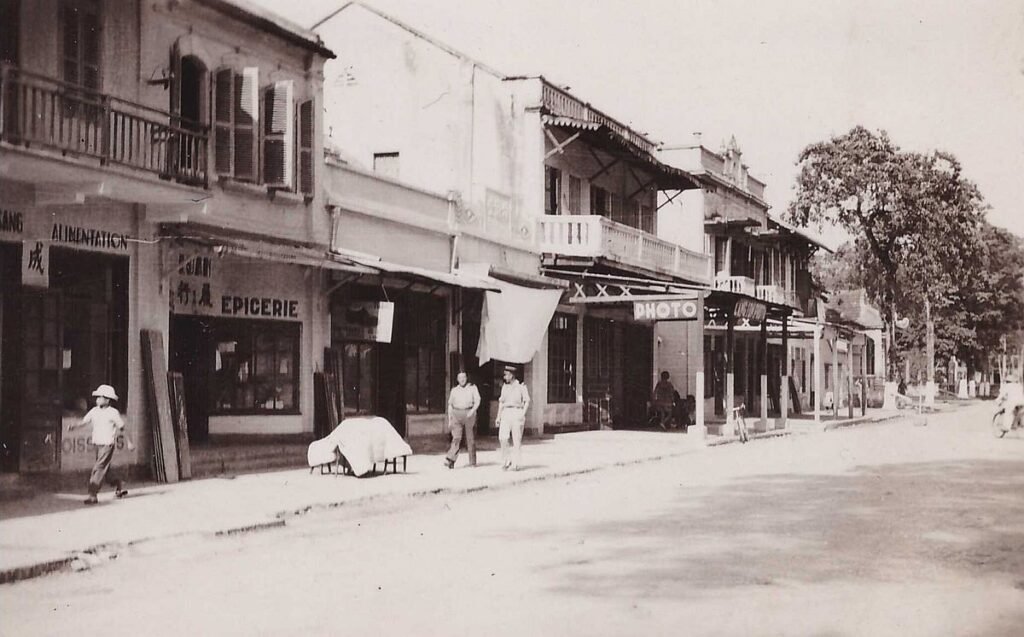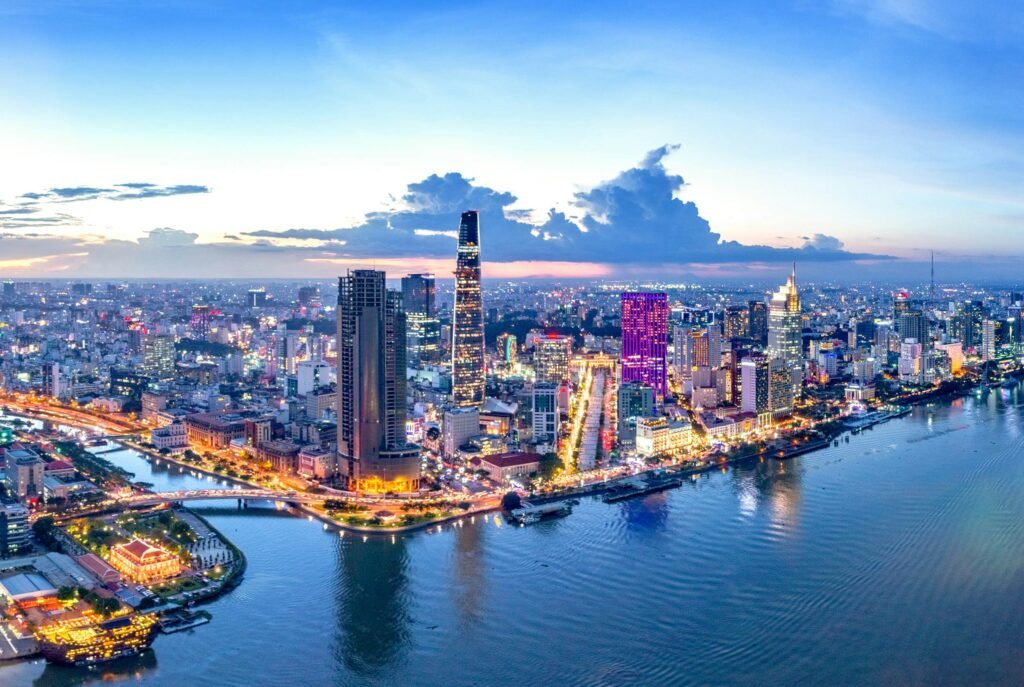Ho Chi Minh City Then and Now
Ho Chi Minh City Then
Ho Chi Minh City, Vietnam’s largest and most vibrant metropolis, has a rich history marked by cultural and political shifts.
Originally a Cham settlement called Baigaur, it later became known as Prey Nokor under Cambodian rule.
In 1698, Vietnamese influence formalized the name Gia Định, which lasted until the French colonial era in the 1860s, when the city was renamed Sài Gòn (or Saïgon in French).
Serving as the capital of French-controlled Cochinchina and later of South Vietnam, Sài Gòn was a center of economic and political activity.
Following the reunification of Vietnam in 1976, the city was renamed Ho Chi Minh City to honor the revolutionary leader Ho Chi Minh.
Despite this official title, many locals still use the name Sài Gòn, especially when referring to the central urban area in District 1 and nearby districts.

In contrast, “Ho Chi Minh City” denotes the broader administrative region that includes both urban and rural districts.
This blend of historical influences gives the city its unique cultural and historical identity, reflected in both its formal and informal names.
Related Article: Manila Then and Now
Ho Chi Minh City History
Ho Chi Minh City, originally a small fishing village, has a long and complex history shaped by various cultures and political changes.
The earliest recorded settlement was a Funan temple built around the 4th century AD, with the Cham establishing the area known as Baigaur in the 11th century.
Around 1145, the Khmer Empire conquered the Cham settlement, renaming it Prey Nokor.
Related Article: Jakarta Then and Now
This area eventually became a strategic trading post. In the early 1600s, through a marriage alliance, the Vietnamese Nguyễn Lords established a foothold in Prey Nokor, initiating Vietnamese migration to the region.
By 1698, Nguyễn Hữu Cảnh formally established Vietnamese governance, detaching it from Cambodian control, and the settlement began expanding into what is now known as Saigon.
The city’s role as a political and commercial center grew under the Nguyễn Lords and then the French colonialists, who took control in 1859.
Related Article: Guangzhou Then and Now
The French transformed Saigon into the “Pearl of the Orient” with colonial architecture and infrastructure, including the iconic Notre-Dame Cathedral, Hôtel de Ville, and Bến Thành Market.
During the colonial era, Saigon was developed as a key urban center in French Indochina.
In the 20th century, Saigon became a focal point during the turbulent period of the Vietnam War.
Related Article: Shenzhen Then and Now

After the French departure and the 1954 Geneva Accords, Saigon was designated the capital of the Republic of Vietnam (South Vietnam).
However, the city faced unrest, poverty, and corruption as it became dependent on American aid, which fueled rapid urbanization but also economic hardship.
Saigon fell to the North Vietnamese forces on April 30, 1975, marking the end of the Vietnam War.
Related Article: Beijing Then and Now
The following year, Saigon was renamed Ho Chi Minh City, in honor of the revolutionary leader Ho Chi Minh, symbolizing the reunification of Vietnam.
Since reunification, Ho Chi Minh City has become the economic powerhouse of Vietnam, evolving into a major manufacturing and business hub.
Related Article: Mumbai Then and Now
In recent decades, it has grown rapidly, both economically and demographically, blending its historical legacy with modernization.
The city remains a symbol of resilience, continuously adapting to changes while retaining its unique cultural identity, evident in both its historical and contemporary areas.
Related Article: Kuala Lumpur Then and Now
Ho Chi Minh City Now

Ho Chi Minh City, formerly known as Saigon, is Vietnam’s most populous and economically significant city.
Located along the Saigon River, just 80 kilometers from the South China Sea, the city plays a central role in the nation’s economy, culture, and infrastructure.
With a metropolitan population of around 10 million as of 2023, it ranks among the largest urban centers in Southeast Asia, both in terms of population and economic impact.
Related Article: Bangkok Then and Now
The city is structured as a municipality with 16 urban districts, five rural districts, and an additional sub-city known as Thủ Đức, reflecting a dynamic mix of dense urban development and surrounding rural areas.
As Vietnam’s leading financial hub, Ho Chi Minh City is a powerhouse for regional and national growth.
It contributes approximately 25% of Vietnam’s GDP, underscoring its role in driving economic development for the entire country.
Related Article: Seoul Then and Now
This contribution is further amplified by the city’s position as the sixth-largest metropolitan economy in ASEAN, a remarkable feat given it is not a national capital.
The area around Cho Lon, a historic and bustling commercial district with deep Chinese roots, remains a key part of the city’s commercial activity and highlights its multicultural heritage.
The city’s location along the Saigon River has long influenced its development.
Related Article: Tokyo Then and Now
The river not only provides natural beauty but also serves as a critical conduit for commerce, connecting the city to the greater Mekong Delta region and to international trade routes through the South China Sea.
This strategic position has helped Ho Chi Minh City maintain its status as an essential gateway for goods entering and leaving Vietnam, fueling its growth as a bustling urban and economic center.
Related Article: Hong Kong Then and Now
FAQs
Ho Chi Minh City is famous for its vibrant culture, historical significance, and role as Vietnam’s economic powerhouse.
It’s known for landmarks like the Cu Chi Tunnels, Notre-Dame Cathedral Basilica of Saigon, Ben Thanh Market, and its dynamic blend of French colonial and modern architecture.
The former name of Ho Chi Minh City is Saigon.
Saigon was renamed Ho Chi Minh City in 1976 after Vietnam’s reunification, in honor of the late revolutionary leader Ho Chi Minh, who played a key role in the country’s independence.
Hanoi is the capital of Vietnam, but Ho Chi Minh City is the country’s largest and most economically influential city.






























